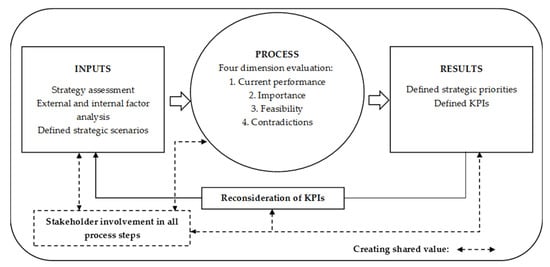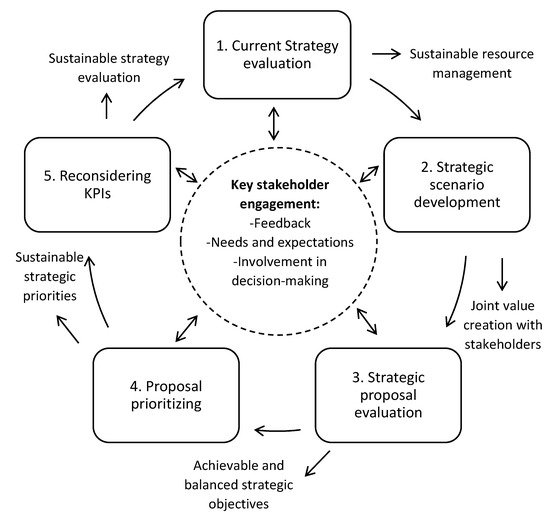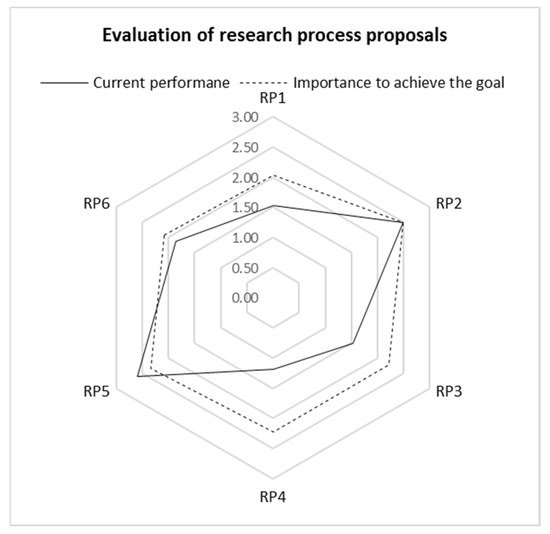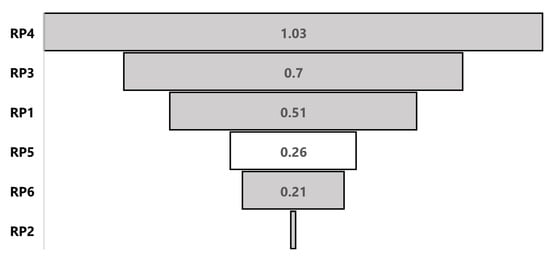You're using an outdated browser. Please upgrade to a modern browser for the best experience.
Please note this is a comparison between Version 1 by Inga Lapina and Version 2 by Jason Zhu.
The planning and development of the university strategy is closely linked to the university’s current performance, key priorities, and capabilities. Researchers have developed an approach for strategic direction evaluation and ongoing key performance indicator analysis.
- university
- sustainability
- sustainable strategy
1. Introduction
To be able to plan the university strategy in an effective and sustainable way, universities have to comprehensively evaluate the direction and level of implementation of the strategy so far, not only through the analysis of the key performance indicators (KPI) but also from a broader perspective, the changing environment and factors influencing the university. The ecosystem in which the university is developing, and the expectations of the key stakeholders are changing continuously. Nowadays, universities have a variety of roles in society, regional development, and innovation. Stakeholders are becoming more interested and involved in the university processes. It is the university’s obligation to change and adapt to the new environment. Kaplan and Norton emphasized the importance of transferring and linking the organizational vision and strategy with a real action to ensure sustainable organizational performance results [1]. Some researchers argue the importance of recognizing that KPIs on their own can be dysfunctional unless they are grounded within the culture of a strategy-focused organization [2]. In the context of evaluating implemented strategy and strategy development process, correct choice of KPIs play an important role. Juran [3] defined strategic quality management as a systematic approach for the whole organization to ensure meeting the organizational and strategic objectives. Constant review not only for the processes but also for the university strategy is necessary [2]. With commitment from the management, support from the employees, ongoing communication, review, verification and validation, constructive alignment of processes with organizational strategy can be accomplished [4].
In recent years, the number of higher education institutions around the world has increased rapidly, contributing to an increasingly competitive environment. As a result, for those universities that want to adapt to trends and challenges it is necessary to pay more attention to how their institutional strategy aligns with the changing environment. For example, enhancing internationalization as a strategic priority has helped universities to attract students and researchers from different regions of the world [5]. From strategy evaluation perspective, the number of attracted international students and researchers is not big enough to evaluate if the strategy is being implemented successfully. A systematic approach to analyse sustainable strategy development, implementation and evaluation should be introduced in the organization. The organization should measure the KPIs consistently and systematically for improvement, for accountability and for sustainability of the organization [4]. Current literature includes analysis of different models and approaches of strategy evaluation but does not show how evaluation of previous performance can be used for the analysis of strategy development and adaptiveness. New solutions to the effectiveness and adaptiveness of the university strategy are needed. The approach needs to be continuously developed to enable the opportunity to adapt to the demands and needs of the key stakeholders and factors influencing the strategic direction. Researchers are looking for new solutions and approaches how to evaluate university strategy in the changing environment.
Systematic involvement of key stakeholders in the strategy implementation and evaluation process is being considered as an opportunity for more agile approach development. A variety of researchers discuss systematic strategy planning and stakeholder involvement in strategy and KPIs development as crucial success factors:
-
Working with rapidly changing demands from stakeholders can be challenging. For a wide scope of stakeholders, the principle of the exchange of views and the search for consensus should be applied [7].
-
It is necessary for the university to manage stakeholders and understand the importance of certain groups of stakeholders, such as the government and how it impacts the university [11].
The important success factor is that the main strategy and all developed strategies in the university are in line with the university’s main vision [9]. Systematic stakeholder involvement in each step of sustainable strategy development is necessary to capture the demands and needs of the main stakeholders [8]. Stakeholders should be included not only in the strategy development process but also the strategy implementation and evaluation stage. Stakeholders are the main source of critically needed feedback to improve the organization and understanding of how strategy is impacting different stakeholder groups. Systematic evaluation of the institutional strategy is the key element to ensure continuous improvement [12]. This also extends to other crucial strategies and processes in the organization. A variety of support strategies, such as human resource strategy, resource strategy and stakeholder engagement strategy should be considered and must be in line with the strategy development process. [13]. Strategies that are in line with the main strategic direction of the organization contribute more to a well-balanced business model by introducing interrelated system of performance indicators. From the literature the researchers conclude that there is still a considerable research gap in systematically measuring institutional strategy in its different stages and balancing the key stakeholder involvement in the decision-making process.
2. Reconsidering the Strategic KPIs
The researchers have created an adapted model that shows the main elements and process of current strategy evaluation, development of the new strategy that includes reconsideration of strategic KPIs. The model also shows the links with key stakeholder engagement and creation of the shared value. The adapted model is shown in Figure 1.


Figure 1. Adapted model for strategy direction evaluation.
The model consists of inputs that include the current strategy assessment, external and internal factor analysis that are used to define possible strategic scenarios. Then each strategic scenario undergoes 4-dimension evaluation involving the key stakeholder groups. In each of the process steps key stakeholder involvement and creation of shared value streams are shown. As stated in the definition of the concept of shared value, the organization and key stakeholders should have mutually beneficial relationship. The stakeholders evaluate the current performance, importance, and feasibility of each strategic direction activity. After the prioritization of activities, the strategic management team analyses if any contradictions with the priorities occur. As the result, the strategic priorities have been defined. Based on the current strategy review, 4-dimension evaluation and final strategic priorities a new set of KPIs can be created. It is crucial to understand that the key stakeholders need to be involved in all steps of strategy development, for example the KPIs reconsideration.
The researchers have described the key steps for stakeholder engagement in the sustainable strategy development process and reconsideration of KPIs. The strategy development process by taking into consideration factors that influence the process and key stakeholder engagement which consists of key stakeholder feedback, their needs and expectations and defined role in the decision-making process is shown in Figure 2.


Figure 2. Sustainable strategy development process.
The researchers have described the main steps of strategy development process and the main results of stakeholder engagement in each of the steps that contributes to creating shared value:
-
Process step: Current strategy evaluation, external and internal factor analysis, and trend forecasting in the university’s ecosystem.Results: Sustainable resource evaluation and management process.
-
Process step: Creation of strategic scenarios based on the previous analysis.Results: Joint value creation with key stakeholders. Wider understanding of common objectives, problems, and opportunities.
-
Process step: Involving key stakeholders to discuss, correct, assess the scenarios proposed and then vote for the preferred scenario.Results: Comprehensively analysed strategic proposals with achievable and balanced objectives.
-
Process step: In order to assess the selected scenario in depth, a questionnaire is used in which each of the proposals are assessed on the basis of its importance, current performance and feasibility. Key stakeholders also have the opportunity to offer their proposals and to specify what should be done to implement these proposals.
- 4.1. Based on internal and external environmental impact factors, survey results and expert proposals, a priority map for the university strategy direction can be established for each of the activities.
- 4.2. Based on the results, the main priorities can be assessed by analysing how successfully the activities have been implemented so far, and what resources the university needs to successfully implement them in the next period of the strategy.
-
Results: Defined sustainable strategic priorities.
-
Process step: After compiling the results, the key stakeholders can be presented with the results and the main performance indicators can be defined for each of the proposals within the working stakeholder groups.Results: Strategic KPIs that allow to evaluate the sustainability of a strategy and creation of shared value in each of the strategy development steps.
As the key steps suggest, the main groups of stakeholders should be engaged in each of the strategy development process steps. In each step stakeholders hold a different role that should be clearly communicated. This allows to comprehensively manage the strategy development process.
Further in this research article, the researchers will show an example of obtained results from using the previously described steps. The example is based on a third-generation university that has three main strategic priorities–study, research, and technology transfer process. The researchers will show an insight of the main steps and results from the evaluation process. The abbreviations used in the following graphics:
-
SP—Study process.
-
RP—Research process.
-
VP—Valorisation process.
Based on the strategic direction evaluation, the researchers created the IPA matrix that shows how each of the offered proposals have been evaluated. The results are shown in Figure 5.


Figure 3. Results of strategy direction evaluation using the IPA matrix.
As it can be seen in Figure 3, the majority of proposals are located in two quadrants—quadrant 1 and quadrant 2. From the theory of the IPA matrix quadrant 1—indicates that the proposals are evaluated as important, but their current performance is weak.
-
Quadrant 2—high importance and high performance. These are the most successful proposals so far.
-
Quadrant 3—shows those proposals that are less important, and their current performance also is weak.
-
Quadrant 4—These proposals are evaluated with high performance, but low importance for the strategic direction.
This can be considered as the first level evaluation to determine which of the proposals should be considered as a priority by analysing two dimensions–importance and current performance. To analyse in depth each of the proposals they should be viewed also from a capability view. To do that the researchers propose additionally to use a radar matrix for each group of proposals. The radar matrix shows the main gaps for each proposal. An example of a radar matrix is shown in Figure 4.


Figure 4. Results of research proposal evaluation.
University can evaluate all processes by using the radar matrix view. As an example, in Figure 4 the researchers have shown the results of research process evaluation and gaps between the current performance and importance to achieve the goal. In this example three versions of proposals can be seen:
-
Current performance = Importance (RP2)
-
Current performance > Importance (RP5)
-
Current performance < Importance (RP1; RP3; RP4; RP6)
By using this radar view, universities can evaluate their current performance and importance of the strategic direction. As Figure 4 shows a variety of gaps between both dimensions, it is necessary to understand why these gaps occur and how they affect the strategic proposal evaluation. Figure 5 shows which of the proposals have the widest gaps.


Figure 5. Gap between Current performance and Importance to achieve the goal.
It is important to mention that the gap between performance and importance can be also in reverse as shown in Figure 5, proposal RP5. This means that the importance of this proposal is rated lower than the actual performance. Furthermore, proposal RP2 has been evaluated equally by performance and importance. To analyse these kinds of proposals more in depth dimensions are needed.
The IPA matrix and radar matrix show only two of the four dimensions adapted by the researchers. One of the main factors that impact these two dimensions is the proposal feasibility. The feasibility can be assessed independently by considering the university resources. This third dimension allows to integrate the evaluation of the organization’s resource capability. In the next table, the researchers have conducted a decision-making matrix for evaluating the strategic proposals(Table 3).
Table 3. Decision-making matrix for evaluating strategic proposal sustainability.
| Example 1 | Importance | Performance | Feasibility | Score | |
| 1 | X | 1 | |||
| 2 | X | 1 | |||
| 3 | X | 1 | |||
| Example 2 | Importance | Performance | Feasibility | Score | |
| 1 | 0 | ||||
| 2 | X | 1 | |||
| 3 | X | X | 2 | ||
| Example 3 | Importance | Performance | Feasibility | Score | |
| 1 | 0 | ||||
| 2 | 0 | ||||
| 3 | X | X | X | 3 | |
| Example 4 | Importance | Performance | Feasibility | Score | |
| 1 | X | X | 2 | ||
| 2 | X | 1 | |||
| 3 | 0 | ||||
| Example 5 | Importance | Performance | Feasibility | Score | |
| 1 | X | X | X | 3 | |
| 2 | 0 | ||||
| 3 | 0 | ||||
| Example N | … | … | … | … |
The decision-making matrix in Table 3 shows proposal evaluation by introducing a score system. The matrix shows how proposals are being evaluated from a three-dimension perspective. The additional element for this matrix is proposal sustainability analysis which allows to prioritize the proposals from the most sustainable to the least. The sustainability is evaluated by considering the importance of the proposal, current performance, and feasibility. Feasibility is considered by evaluating how the proposal could be implemented by using the organizational resources. The sustainability score of the proposal consists of the previously conducted stakeholder survey where experts evaluated each dimension with scores from 1 (low) to 3 (high). By obtaining a score above 1 in at least two dimensions the proposal can be considered as potentially sustainable.
The example shows that the proposal RP3 has obtained score above 1 in all of the dimensions. The total obtained score is 6.24 points out of 9.00 that equals 69.33%. This analysis can be used to prioritize the proposals and determine how the proposals fulfil the strategy.
The fourth dimension–contradictions–should be assessed with the strategic management team. The strategic priorities should be evaluated by analysing how the implementation of the proposals could possibly contradict. Contradictions can occur if two proposals are equally prioritized and need the same resources. Therefore, each of the strategic proposals need to have clearly defined aims and resources. It is necessary to look at the long-term and short-term benefits the organization could gain by implementing one or another proposal. That allows to analyse in depth the sustainability of a proposal by looking at the use of resources and main benefits for the organization and the key stakeholders.
Only after the main strategic priorities have been prioritized and agreed upon, the reconsideration of KPIs can be done. In Figure 1 the researchers showed that stakeholders should also be involved in the strategic indicator development. More crucially stakeholders should participate in the process of developing the strategic targets for the KPIs. By involving the stakeholders, it is possible to assure that the chosen strategic direction, proposals, and performance indicators are in line with the organization and the key stakeholder needs and demands.
